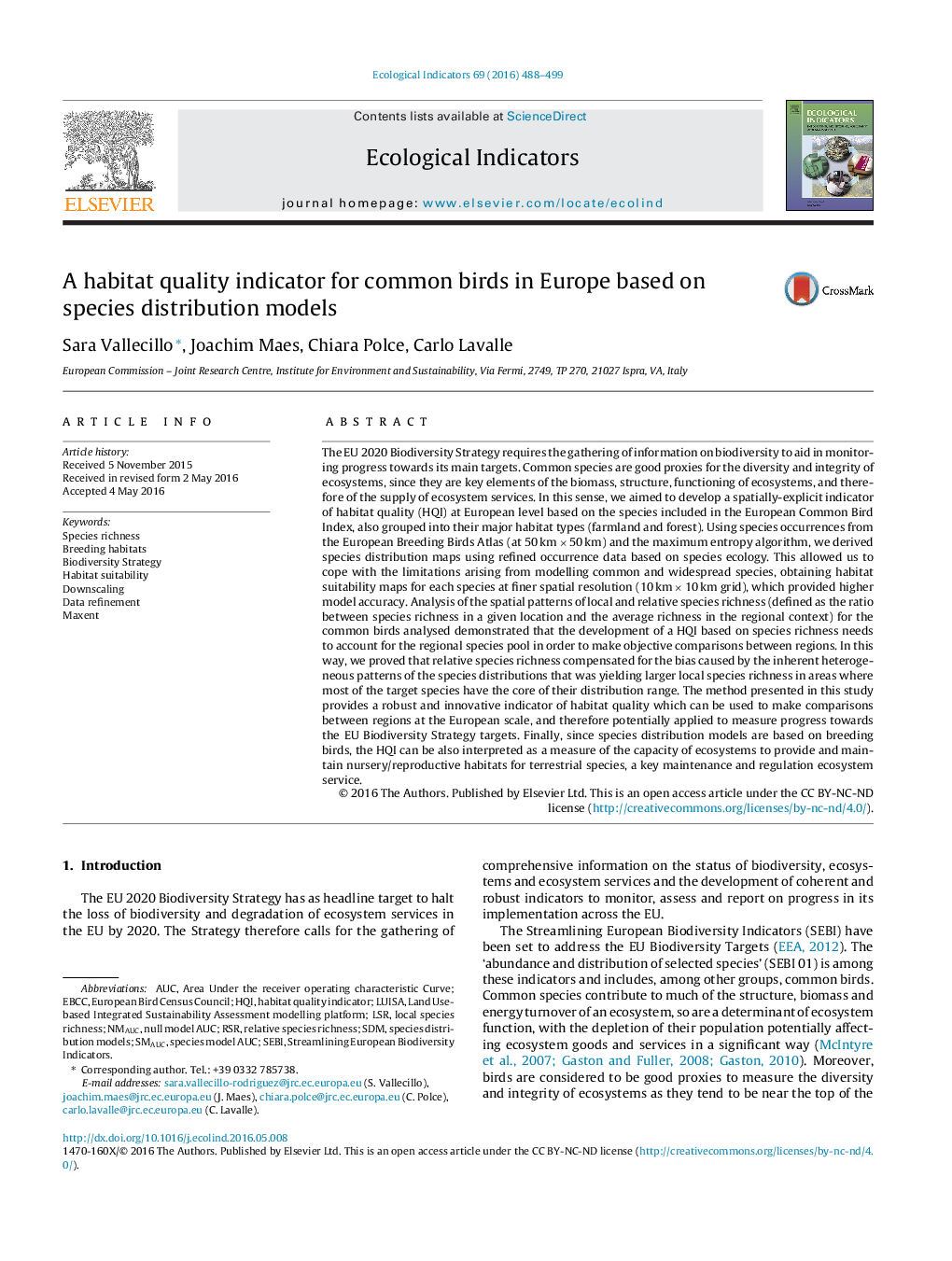| کد مقاله | کد نشریه | سال انتشار | مقاله انگلیسی | نسخه تمام متن |
|---|---|---|---|---|
| 6293277 | 1617133 | 2016 | 12 صفحه PDF | دانلود رایگان |
عنوان انگلیسی مقاله ISI
A habitat quality indicator for common birds in Europe based on species distribution models
ترجمه فارسی عنوان
شاخص کیفیت زیستگاه برای پرندگان معمولی در اروپا بر اساس مدل های توزیع گونه
دانلود مقاله + سفارش ترجمه
دانلود مقاله ISI انگلیسی
رایگان برای ایرانیان
کلمات کلیدی
MaxEntLSREBCCRSRlocal species richnessDownscaling - ریز مقیاس نماییAUC - AUCSpecies richness - غنای گونه ایarea under the receiver operating characteristic curve - محدوده تحت منحنی مشخصه عملکرد گیرندهSpecies distribution models - مدل های توزیع گونهSDM - منابع انسانیHabitat suitability - مناسب بودن محل سکونتdata refinement - پالایش اطلاعات
موضوعات مرتبط
علوم زیستی و بیوفناوری
علوم کشاورزی و بیولوژیک
بوم شناسی، تکامل، رفتار و سامانه شناسی
چکیده انگلیسی
The EU 2020 Biodiversity Strategy requires the gathering of information on biodiversity to aid in monitoring progress towards its main targets. Common species are good proxies for the diversity and integrity of ecosystems, since they are key elements of the biomass, structure, functioning of ecosystems, and therefore of the supply of ecosystem services. In this sense, we aimed to develop a spatially-explicit indicator of habitat quality (HQI) at European level based on the species included in the European Common Bird Index, also grouped into their major habitat types (farmland and forest). Using species occurrences from the European Breeding Birds Atlas (at 50 km Ã 50 km) and the maximum entropy algorithm, we derived species distribution maps using refined occurrence data based on species ecology. This allowed us to cope with the limitations arising from modelling common and widespread species, obtaining habitat suitability maps for each species at finer spatial resolution (10 km Ã 10 km grid), which provided higher model accuracy. Analysis of the spatial patterns of local and relative species richness (defined as the ratio between species richness in a given location and the average richness in the regional context) for the common birds analysed demonstrated that the development of a HQI based on species richness needs to account for the regional species pool in order to make objective comparisons between regions. In this way, we proved that relative species richness compensated for the bias caused by the inherent heterogeneous patterns of the species distributions that was yielding larger local species richness in areas where most of the target species have the core of their distribution range. The method presented in this study provides a robust and innovative indicator of habitat quality which can be used to make comparisons between regions at the European scale, and therefore potentially applied to measure progress towards the EU Biodiversity Strategy targets. Finally, since species distribution models are based on breeding birds, the HQI can be also interpreted as a measure of the capacity of ecosystems to provide and maintain nursery/reproductive habitats for terrestrial species, a key maintenance and regulation ecosystem service.
ناشر
Database: Elsevier - ScienceDirect (ساینس دایرکت)
Journal: Ecological Indicators - Volume 69, October 2016, Pages 488-499
Journal: Ecological Indicators - Volume 69, October 2016, Pages 488-499
نویسندگان
Sara Vallecillo, Joachim Maes, Chiara Polce, Carlo Lavalle,
